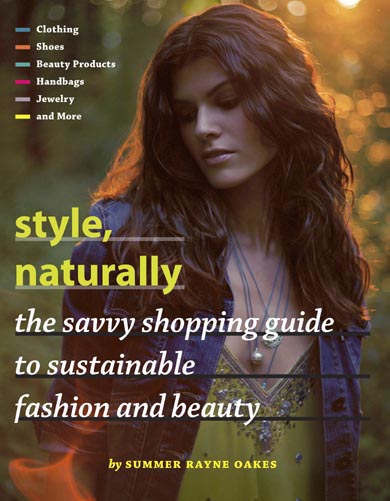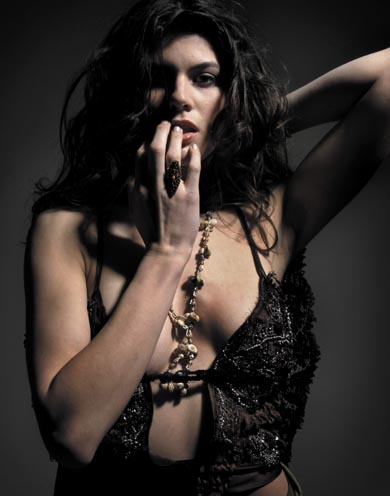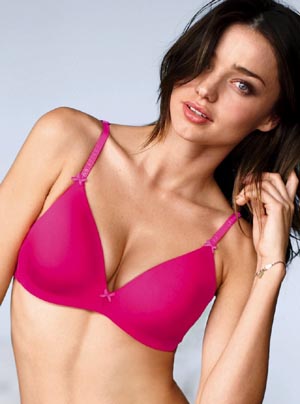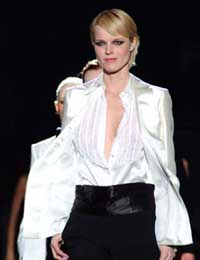Many years ago, I received an email from a group titled something along the lines of the African–American Fashion Designers, inviting us to the group’s shows in New York. I said to an editor of ours, ‘But we don’t support a White Fashion Designers of America.’
He replied, ‘Yes we do. It’s called New York Fashion Week.’
But he has a point. I know there are black designers present, but perhaps not as many as one would expect in the United States. Ditto non-white journalists.
New York Fashion Week is a business, which does mean that if designers, regardless of race, cannot pony up with the money for their showings, then its organizers have no obligation to accept them.
It might mean, however, that black designers have found it harder to get the ?nancing they require for these shows.
Black designers aside (as that would be a huge post on its own), how about models of colour?
When the New Zealand print edition of Lucire went on retail sale with Denise Vasi on the cover, I remember getting a bit of applause. Not that I thought putting a black model on the cover was revolutionary. But enough people Stateside did, more so when we had a second one on the second issue.
Two in a row, according to America, was unheard of.
Since then, I have noticed that even we have had white models, alleviated only by Stacie Jones Upchurch. I think this puts us back to the ratio that Vogue might have: I read somewhere it was one in twelve. And that is not good enough in a world which is far more of a melting pot.
Few Lucire covers are shot in New Zealand. Here, I’d expect to ?nd models with Polynesian blood, but the majority of our covers are shot Stateside. With white models.
In defence of our photographers, the majority of models on the books are white. They have no agenda going in. But why are models of colour so hard to ?nd there?
I read in Metro (the New York edition) that Guy Trébay of The New York Times has expressed similar concerns. ‘The runway doesn’t re?ect the world. It makes fashion feel very backward,’ he says. In New Zealand, I think the situation is more realistic, but in our quest to have a “mainstream” fashion week, even we might be guilty of following the US playbook. We need to watch ourselves to make sure we don’t.
Here, I was encouraged to note that Elle Gibson, the Cadbury Dream Model Search winner for 2007, has a darker complexion. If you look at the new models’ feature in Lucire 24, the real up-and-comers, including Elle, have very exotic mixtures. Bruna Tenorio, selected by our Laura Ming-Wong as a face to watch, has Chinese and Japanese mixed in with her Brazilian blood. She’s taking on catwalks and campaigns globally.
So I have to wonder if this whole homogeneous, white mood in the US is in line with what the rest of us are thinking.
The Metro article goes on to show how black models have gotten together every now and then in the US, but the impact is short-lived. Fashion goes back into its white way.
“There was a turning point where you had many girls working at once, and it looked like things were going to change; we all had high hopes,” says [Naomi] Campbell, the ?rst black woman to appear on the covers of French and British Vogue, of the boom minority models experienced in the ’90s. “But then things regressed. Now it seems like all that hard work we did has not changed anything. It’s really hard to wake up in 2007 and accept that we shouldn’t push the door open again. We can’t shut our mouths any longer,” Campbell says.
It all begins with catwalk, according to the article. ‘The runway is very crucial. It’s where careers are made because all aspects of fashion converge in one room for a show,’ says IMG’s Kyle Hagler.
But the mood is one of homogeneity, according to some in the article. Bollocks, I say—not to Metro, but to those who think that the fashion industry seeks same-again dullness.
‘Isaac Mizrahi is name-checked by several in the industry as having a history of employing models of all ethnicities and body types,’ reads the article. That is a good thing. Mizrahi has a clear conscience and his collection should stand out. It would do in our books. Diane Von Fürstenberg and Baby Phat were more balanced this time round, according to Diversity Inc. Again, they stand out and their brands potentially become stronger—because the mood of the moment is being real.
But even Mizrahi has concerns about doing the right thing—or should I say, doing the normal thing.
‘I discovered a lovely biracial girl in a café who was rather zaftig, and I featured her in one of my shows. You could feel editors shutting down whenever she hit the runway,’ he tells Metro.
Then there is something wrong with my colleagues in the industry. I do not believe that there is anything in the Zeitgeist that should prompt that shutting-down.
In fact, the Zeitgeist is quite the opposite: multiculturalism is cool. Very cool. Because it is very real.
Here’s what I loved best about the piece though: the legal precedent setting.
It’s also possibly illegal. “There’s a ?ne line between artistic vision and discrimination. If a designer chooses to define a certain vision as all white or all black, you run the risk of violating Title VII of the Civil Rights Act of 1964,” explains Anna Park, regional attorney in the Los Angeles district attorney’s of?ce of the Equal Employment Opportunity Commission. The Act prohibits employment discrimination “based on race, color, religion, sex or national origin.” Park worked on the case against Abercrombie & Fitch, which the retailer lost. “Abercrombie & Fitch got into trouble when they tried to de?ne ‘all-American’ as white male. If I said I wanted to hire an aggressive attorney and that ‘aggressive means white, an Asian attorney wouldn’t be aggressive enough,’ that’s discrimination,” she adds.
This is as pressing an issue as the whole skinny models’ debate. Funny how we need to take a stand on a subject that, to the rest of the population (read: the consumers of fashion and beauty products), should be normal behaviour.







